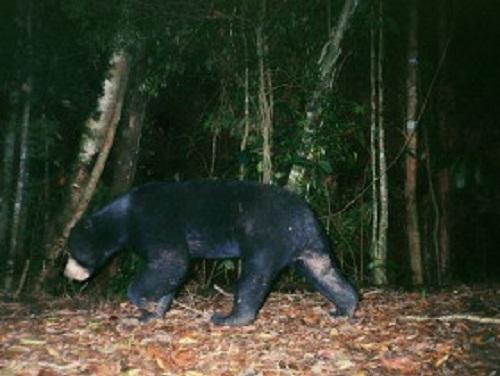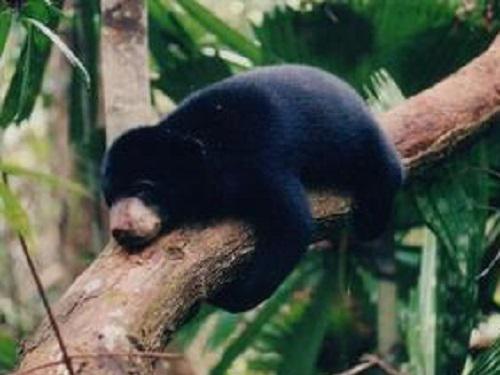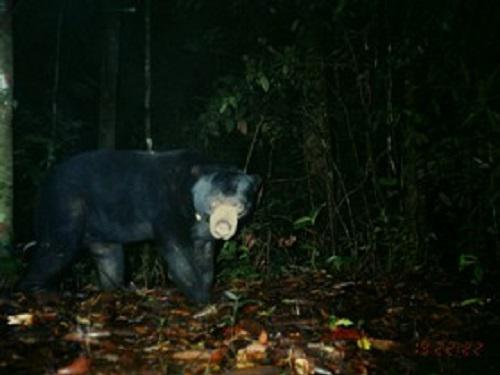Wai Ming Wong
This research originates from the priorities highlighted in the IUCN/SSC Sun Bear Conservation Action Plan a critical one of which is to address the urgent need to accurately assess the conservation status of sun bears. This research aims to determine factors underlying the population trends and distribution of sun bears, their response to deforestation, the extent to which sun bears conflict with people, and to examine how they adapt to commercial landscapes.

The IUCN/SSC Bear Specialist Group has prioritised research on sun bears (Helarctos malayanus) as critical for bear conservation. Kerinci Seblat National Park (KSNP), Sumatra, is one of the last remaining strongholds for the endangered Malayan sun bear, but ongoing habitat loss, and increasing conflicts with people, suggest a bleak future for this forest dependant species. Few studies of conservation value have been conducted on this species. Consequently, this research aims to serve as an essential monitoring tool for future conservation assessment of the species, by investigating population trends and distribution of sun bears, patterns of human-sun bear conflict, and how bears adapt to commercial landscapes.

Indonesia is a biodiversity hotspot under threat of biodiversity loss through increased forest conversion into commercial landscapes (oil palm and timber). Our current understanding of the ecology of these landscapes is extremely poor, however understanding species adaptability to anthropogenic change is essential to conservation.

Protected areas have long been the focus for ecological research but their potential as wildlife habitat can be limited by their size, location and the economic and social costs required to sustain them. In Indonesia many protected areas are small isolated fragments in a matrix of human dominated, modified or commercial landscapes. Although unprotected land forms the majority of most countries, the ecology of such landscapes and of the species inhabiting them is frequently overlooked. Understanding the community composition and species ecology of such areas can provide us with an understanding of different species adaptability to anthropogenic change and how their ecology and behaviour are altered to facilitate co-existence with humans.
The Malayan sun bear (Helarctos malayanus) can be regarded as a largely neglected animal species with only a handful of researchers involved in their conservation. Very little is known of its status and conservation needs. As human populations expand and natural habitats shrink, people and animals increasingly come into conflict over living space and food. Although not yet scientifically proven, it is very likely that continued habitat loss and ongoing conflicts with people have led to a decrease in population numbers. Therefore, it is critical to gather information on their population trends, habitat requirements and associated threats before they become critically endangered. This research seeks to address this information gap for sun bears in a key area of Sumatra.